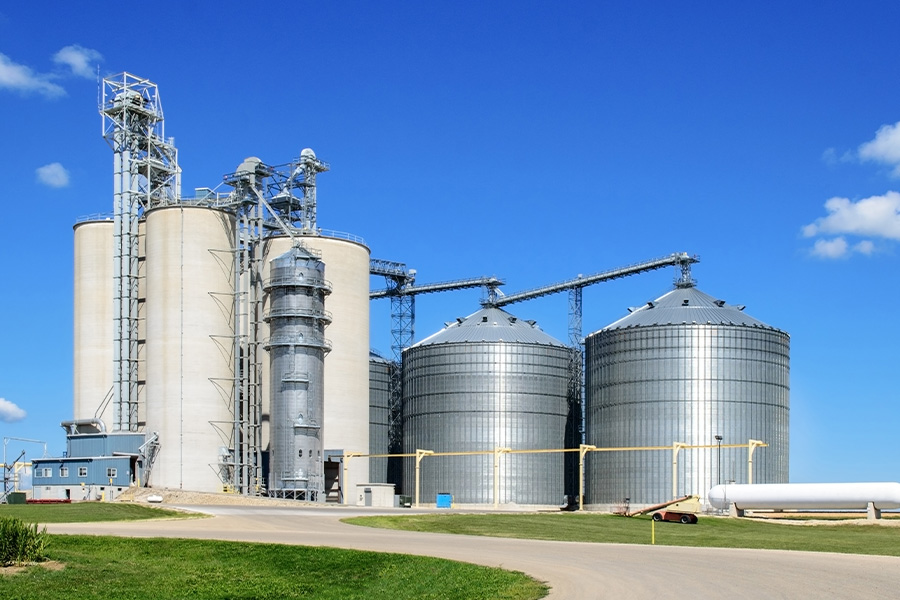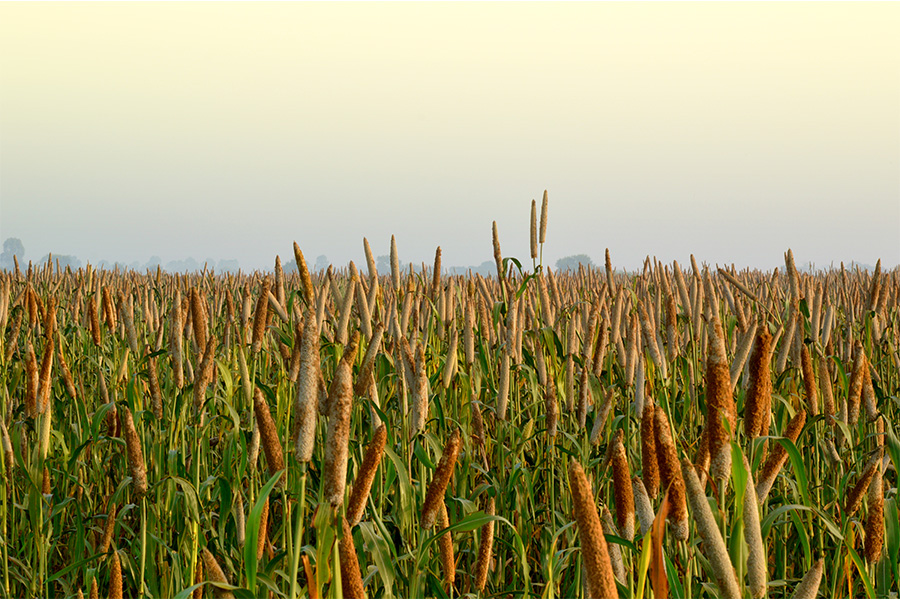Grains
-

SB 28-20
Grain Millet
Commercial insect and weed control in grain millet. Updated annually.
G. David Buntin, Eric P. Prostko, and Allison Faye Johnson
|
-

SB 28-21
Grain Sorghum
Commercial insect and weed control in grain sorghum. Updated annually.
G. David Buntin, Eric P. Prostko, Alfredo Martinez, and Allison Faye Johnson
|
-

Commercial insect and weed control in small grains: wheat, triticale, barley, oats, and rye. Updated annually.
G. David Buntin, Stanley Culpepper, Alfredo Martinez, and Allison Faye Johnson
|
-

Aeration conditions grain and seed by lowering the temperature of the material and equalizing the temperature within the storage structure. This prevents moisture migration and condensation and can reduce losses during storage.
John W. Worley
|
-

B 1216
Pearl Millet for Grain
Pearl millet (Pennisetum glaucum [L.] R. Br.) has a long history of use as a summer grazing and hay crop in the southeastern U.S. The recent development of new, adaptable and productive grain pearl millet hybrids in the Southeast gives crop producers a suitable alternative feed grain for dryland production.
G. David Buntin
|
-

This publication contains information on the most important and common diseases of oats, the biology of the causal agents, as well as a detailed description of the disease symptoms, relevant up-to-date information on conditions favoring the diseases, as well as cultural, genetic, and chemical methods of control. The publication is intended for producers, crop consultants, county faculty, students, and the general public.
Alfredo Martinez and Ryan W. Hodgson
|
-

Determining an equitable price for purchased forages is a necessary but often uncomfortable topic of discussion for feed growers and purchasers. Usually this discussion is in the context of corn silage; however, the same principles can be used in any discussion involving hay, baleage or grains. In order for an input market to be efficient, the price agreed upon by both buyers and sellers should adequately compensate the producer while still allowing the purchaser the opportunity to economically use the input.
Jeremy Kichler and R. Curt Lacy
|
-

This research report presents results of the 2019-2020 performance tests of small grains grown for grain and forage. Grain evaluation studies were conducted at five locations in Georgia, including Tifton, Plains, and Midville in the Coastal Plain region; Athens in the Piedmont region; and Rome in the Limestone Valley region. An additional study was conducted at Citra, Florida. Winter annual forage tests were conducted at all Georgia grain sites except Midville, and also at Headland and Clanton, Alabama. Multiple tests were lost this year due to the impact of Covid-19 on university operations. For identification of the test locations, consult the map inside the back cover of this report.
Daniel J Mailhot
|
-

This research report presents the results of the 2019 corn, sorghum and summer annual forage performance trials. Trials were conducted at seven locations throughout Georgia, depending on the crop. These included Tifton, Plains, and Midville in the Coastal Plain region, Athens and Griffin in the Piedmont region, Calhoun in the Limestone Valley region, and Blairsville in the Mountain region. Hybrids used for silage were evaluated at Tifton, Athens, Calhoun, and Blairsville.
Daniel J Mailhot
|